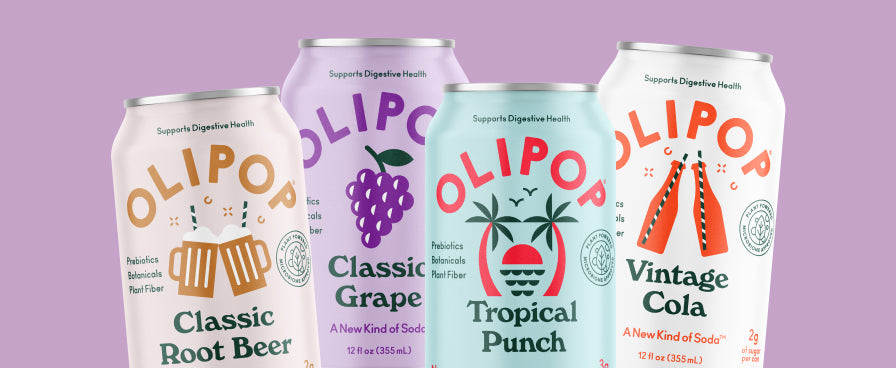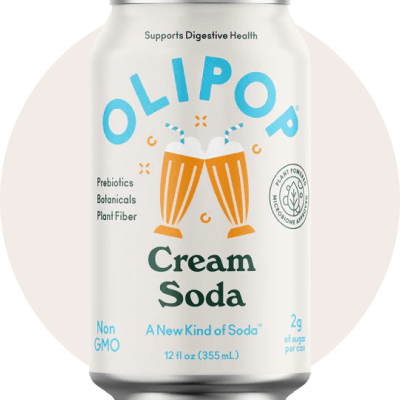As a registered dietitian nutritionist, I’m obsessed with fiber! I used to joke with clients that my goal was to make fiber sexy. Let me explain… Fiber has so many health benefits. But when most of us think of fiber, we think of powder in water or prune juice at your grandparent’s house. Or maybe the phrase “beans, beans, they’re good for your heart!” comes to mind! In other words, fiber isn’t exactly exciting, memorable, or desirable.
By the end of this article, my goal is to get you excited about fiber and for you to see fiber as your new best friend! And what better time to love on fiber than February! February is American Heart Month and a diet rich in fiber is a great and easy way you can help support your heart health! Let’s dive in…
February is American Heart Month
Every February is American Heart Month, a month dedicated to raising awareness about heart health and cardiovascular diseases. Heart disease remains one of the leading causes of death in the United States, so American Heart Month plays a crucial role in emphasizing the importance of preventive measures, early detection, and lifestyle changes to maintain a healthy heart.
Here are a few ways you can prioritize your heart health this month and beyond:
- Reduce/manage your stress levels
- Quit smoking if you currently do
- Limit alcohol intake
- Find and engage in movement you enjoy
- Prioritize your sleep
- Adapt an overall balanced diet
- Increase your fiber intake (more on that later!)
When it comes to health changes, I suggest taking a layering approach. Start with one strategy, be consistent with it, and then add another when it becomes something you don’t have to think so much about. This way the changes are sustainable, and the results are too.
What is Fiber?
One of the strategies for supporting heart health is a diet rich in fiber. But what exactly is fiber? I’m so glad you asked! Fiber is a non-digestible type of carbohydrate that passes through the body undigested instead of breaking down to glucose like other carbohydrates.
Picture this! Three main components make the grain “whole.” The fiber is the outer “tough” layer of the grain, known as the bran, and its job is to protect the inside of the grain. The inside of the grain houses the endosperm and the germ, which together contain the starchy energy and all the powerful nutrients.

Images source: https://wholegrainscouncil.org/resources
The problem is that we tend to remove that tough outer layer during processing, creating what’s called a “refined grain”. This process takes that whole-grain carbohydrate with fiber and all the nutrients and turns it into a white carbohydrate, removing the bran and the nutrient-packed germ inside and leaving it with just that starchy energy, aka the endosperm. So when it comes to fiber, we want whole grains not refined ones! In other words, when looking for products on the shelves look for “100% whole wheat" or "100% whole grain.”

Image source: https://www.hsph.harvard.edu/nutritionsource/what-should-you-eat/whole-grains/
How Does Fiber Support Your Heart? Plus Other Benefits
Great question! Your body can’t digest fiber, but it still plays an important role in our health.
The 2020-2025 Dietary Guidelines for Americans state that improving consumption of dietary fiber may reduce the risk of cardiovascular disease in addition to type 2 diabetes, and some types of cancer. It was also reported that low intake of dietary fiber is a public health concern for the general U.S. population. In other words, we’re not getting enough fiber! So there is no better time than now to start adding a little more fiber to your life.
Specifically, when it comes to heart health, studies show that adequate fiber intake can help reduce inflammation, decrease total cholesterol levels and LDL cholesterol levels, and lower your blood pressure. And this is especially top of mind in February as we celebrate American Heart Month!
On top of all the amazing benefits listed above, fiber comes with even more health benefits including:
- Leaving you feeling full and satisfied
- Keeping your digestive system working optimally
- Increasing the weight, size, and softness of your stool
- Maintaining stable blood sugar levels
- Promoting the growth of good bacteria in your gut (especially prebiotic, soluble fiber!)
A truly impressive component of our diets!
So How Much Fiber Do You Need?
The adequate intake (AI) recommendations for fiber set by the Institute of Medicine are 25 to 38 grams per day for adult women and men.
How can you meet this daily recommended fiber intake? You can start by adding a fiber-rich ingredient to your regular and favorite meals, like adding berries on top of your oatmeal or a side of veggies with your sandwich. You could also consider simple swaps like whole grain bread for white bread or bean-based pasta for semolina. These swaps can make a huge difference without disrupting your preferences too much — which helps make the change much more sustainable!
A very important note though as you increase your fiber intake: be sure to increase your water intake as well to prevent discomfort! And, if you’re reading this and feel like you eat little to no fiber at all and want to add it in, I suggest going slowly and picking one meal at a time to add that fiber-rich swap in.
Where to Find Fiber
Fiber is found in plenty of places, not just the prune juice at your grandparent’s house! You’ll find fiber in:
- Whole grains (watch out for those refined grains!)
- Fruits
- Vegetables
- Oats
- Nuts
- Seeds (like flax and chia)
- Beans and legumes
In addition to these food sources, you can also help boost your fiber (and water!) intake by adding a delicious prebiotic functional beverage like OLIPOP to your daily routine. Every can is considered high in fiber and has only 2-5g of sugar. This helps bring you one step closer to fulfilling your daily intake of fiber. It is one of my favorite ways to fill gaps in my fiber intake… and could become yours too! My favorite hands down is OLIPOP Cream Soda.
So, want an easy start to supporting your heart health and fiber intake? Crack open a can of OLIPOP. And happy Heart Month to all!
Sources:
- McRae, M. P. (2017). Dietary fiber is beneficial for the prevention of cardiovascular disease: An umbrella review of meta-analyses. Journal of Chiropractic Medicine, 16(4), 289–299. https://doi.org/10.1016/j.jcm.2017.05.005
- Dietary fiber: Essential for a healthy diet. (2022, November 4). Mayo Clinic. https://www.mayoclinic.org/healthy-lifestyle/nutrition-and-healthy-eating/in-depth/fiber/art-20043983
- Corliss, J. (2022, August 1). How a fiber-rich diet promotes heart health. Harvard Health. https://www.health.harvard.edu/heart-health/how-a-fiber-rich-diet-promotes-heart-health
- Shivakoti, R., Biggs, M. L., Djoussé, L., Durda, P., Kizer, J. R., Psaty, B. M., Reiner, A. P., Tracy, R. P., Siscovick, D. S., & Mukamal, K. J. (2022). Intake and sources of dietary fiber, inflammation, and cardiovascular disease in older US adults. JAMA Network Open, 5(3), e225012. https://doi.org/10.1001/jamanetworkopen.2022.5012
- Trumbo, P. R., Schlicker, S. A., Yates, A. A., & Poos, M. I. (2002). Dietary reference intakes for energy, carbohydrate, fiber, fat, fatty acids, cholesterol, protein and amino acids. Journal of the American Dietetic Association, 102(11), 1621–1630. https://doi.org/10.1016/s0002-8223(02)90346-9
- U.S. Department of Agriculture and U.S. Department of Health and Human Services. Dietary Guidelines for Americans, 2020-2025. 9th Edition. December 2020. Available at https://www.dietaryguidelines.gov/
- February is American Heart Month, a month dedicated to raising awareness about heart health and cardiovascular diseases.
- One of the strategies for supporting heart health is a diet rich in fiber.
- Adequate fiber intake could help reduce inflammation, decrease total cholesterol levels and LDL cholesterol levels, and lower your blood pressure.













-v1683647792937.jpg)




